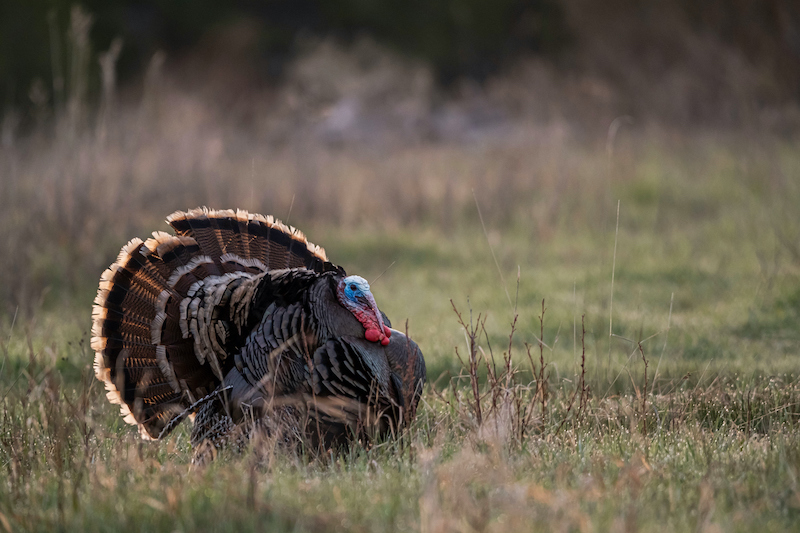Spring is near, and turkey season will soon open for bowhunters. Turkeys cover most of North America, ranging from parts of Canada to as far south as Mexico’s Yucatan Peninsula. To get in on the fun of bowhunting springtime gobblers, you should know a few nuances about each turkey subspecies.
As the name implies, the Eastern turkey’s range covers the eastern half of the United States and into Canada. Because they inhabit a heavily populated region, these birds are accessible and hunted heavily. Aaron Warbritton of “The Hunting Public” hunts across the country to create content for the YouTube channel, and always finds Easterns challenging.
“Due to the hunting pressure they receive and dense timber they live in, Eastern turkeys are tough,” Warbritton said. “Especially when they’re flocked up with a few hens, Eastern toms aren’t as talkative as others, which makes them really hard to hunt.”
Don’t be discouraged, though. Eastern toms have a loud, throaty gobble that echoes through the woods, sending adrenaline through your veins as they approach. If you live in the eastern half of the country, you seldom have to go far to find habitat holding these cagy birds.

Merriam’s have white-tipped feathers. Photo credit: John Hafner
The Merriam’s turkey is unmistakable because of its vocal personality and white-tipped feathers. This beautiful subspecies lives in the western United States and, unlike the hard-hitting gobble made by Easterns, the Merriam’s turkey has a light gobble. Even so, male Merriam’s aren’t shy about broadcasting their presence. The Merriam’s turkey also has a shorter beard and spurs than Easterns.
“It’s a lot of fun to hunt Merriam’s, especially because of the rugged country they live in,” Warbritton said. “They live in areas with lots of topography, so you can get creative and use terrain to your advantage to sneak in close before setting up. However, I haven’t had the best luck using tom or jake decoys when hunting Merriam’s.”
The nomadic Rio Grande is common in the southcentral U.S., from Kansas to Texas, and scattered across other Western states like California and Oregon, as well as Idaho, Utah and Nevada. Rios have distinctive bronze accents in their feathers.
“It seems like Merriam’s and Rios cover a lot of ground,” Warbritton said. “They’ll move a long way when they want to move to new areas. Finding high points and listening for distant gobbles, and then moving in and setting up can be an effective tactic.”
The Osceola is known as the Florida turkey because it’s found south of northwestern Florida’s panhandle. You can differentiate Osceola from Eastern turkeys by dark barring on an Osceola’s wings and long legs.
“The Osceola subspecies seems to have an attitude,” Warbritton said. “They don’t like other gobblers, and I’ve had great luck using decoys positioned in an aggressive posture.”
The Gould’s subspecies lives mostly south of the border below southeastern Arizona and southwestern New Mexico throughout Mexico’s mountainous terrain. Gould’s turkeys are vocal and aggressive. They aren’t hunted heavily, so they’re susceptible to calling and decoying.
“It’s always an adventure when you’re chasing Gould’s turkeys,” Warbritton said. “One time, I even got bed bugs in Mexico when I was chasing them.”
The Ocellated subspecies looks and sounds nothing like the other subspecies. It has a unique gobble, long spurs, and lives only in Guatemala and Belize in Mexico’s Yucatan Peninsula. Iridescent feathers that mimic a rainbow make this bird look freakish compared to other turkeys. It also has no beard and tops out at roughly 12 pounds.
No matter where you live in the United States, you’ll find ample opportunities to hunt turkeys this spring. Embark on your own turkey tour, and pursue various subspecies in other states. You’ll test your turkey-hunting skills, see new sights, and create bowhunting memories that’ll last a lifetime.